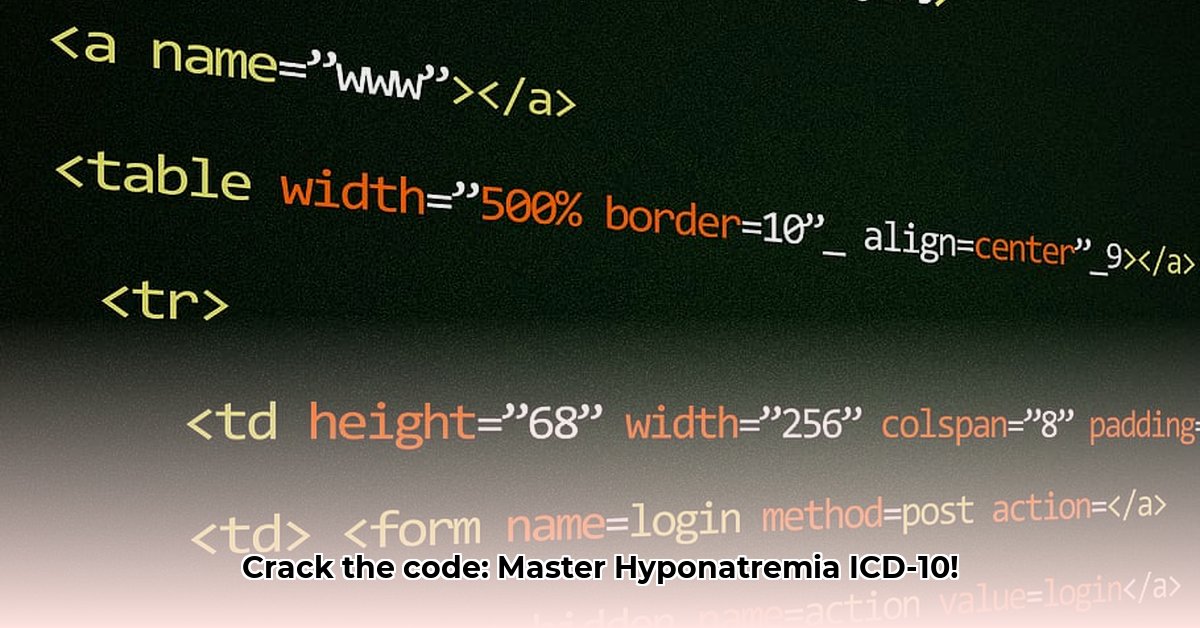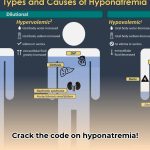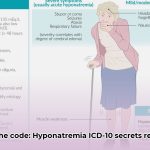Getting medical billing right is crucial for healthcare providers to receive accurate reimbursement. Hyponatremia, a condition characterized by low sodium levels in the blood, can be complex to code using the ICD-10 system. This guide provides a detailed approach to accurate coding, covering essential documentation, secondary codes, specific scenarios, and strategies for avoiding common mistakes. Learn when and how to request clarification when needed, making hyponatremia coding easier, saving time, and improving billing accuracy. For more ICD-10 hyponatremia information, see this helpful resource: Hyponatremia ICD-10 Codes.
Coding Hyponatremia Accurately: A Detailed Guide to ICD-10
Hyponatremia, simply put, is a low sodium level in your blood. Accurately coding it for insurance purposes is crucial, as incorrect codes can lead to rejected insurance claims and impact the patient’s treatment plan. This guide offers a step-by-step process, with examples and clarifying details, making it easy to understand and apply.
Understanding Hyponatremia: The Core Elements
Sodium, a vital electrolyte, plays a key role in regulating fluids, nerve signals, and muscle function. Normal serum sodium levels range from 135 to 145 mEq/L (mmol/L). When sodium levels drop below 135 mEq/L, symptoms can range from mild, like fatigue or nausea, to severe, such as seizures or coma. Identifying the root cause is essential to correctly code the issue, and ultimately, improve patient outcomes through accurate data analysis. Understanding the severity and chronicity (acute vs. chronic) also impacts coding.
The Main ICD-10 Code: E87.1 – Your Foundation
The primary ICD-10 code for hyponatremia is E87.1 (Hypo-osmolality and hyponatremia). This code serves as the base for building your coding, but it often needs more detail to present a comprehensive patient picture. E87.1 should be used when both hypo-osmolality and hyponatremia are present.
Secondary Codes: Adding Depth and Detail to the Clinical Story
Secondary codes are crucial for detailing the why behind the hyponatremia. They paint a more complete picture of the patient’s condition, specifying the underlying cause, related conditions, and any complications. If a patient has hyponatremia due to SIADH (Syndrome of Inappropriate Antidiuretic Hormone Secretion), you would use a secondary code to specify that as the direct cause. Similarly, if the hyponatremia leads to neurological complications like seizures or cerebral edema, those should also be coded. Always code the underlying condition first, followed by E87.1.
Here’s a table illustrating common causes and their corresponding codes:
| Underlying Cause | ICD-10 Code |
|---|---|
| Syndrome of inappropriate antidiuretic hormone (SIADH) | E22.2 |
| Diabetes insipidus | E23.2 |
| Vomiting | R11.1 |
| Diarrhea | A09 |
| Dehydration | E86 |
| Adrenal insufficiency | E27.4 |
| Heart Failure | I50.9 |
| Renal Failure | N19 |
| Drug-induced hyponatremia (diuretics, antidepressants) | T36-T50 with a fifth or sixth character to specify the agent |
| Other specified hyponatremia | E87.8 |
| Unspecified hyponatremia | E87.9 |
These secondary codes are essential for billing accuracy and help medical professionals understand the patient’s specific situation, leading to better patient care outcomes. Always strive for the most specific code available. For example, instead of just coding “vomiting,” specify if it’s due to gastroenteritis (A09) or another identifiable cause.
Essential Documentation: The Cornerstone of Accurate Coding and Audit Readiness
Comprehensive and precise documentation is critical “evidence” for accurate hyponatremia coding, reimbursement, and audit defense. Here’s what you must include in your clinical notes:
- Detailed Symptoms: Describe how the patient presents, including neurological signs (confusion, seizures, weakness, altered mental status), gastrointestinal symptoms (nausea, vomiting, diarrhea), cardiovascular symptoms (edema, shortness of breath), and any other relevant issues. Quantify the severity of symptoms whenever possible (e.g., “severe headache unresponsive to analgesics”).
- Active Intervention: Document specific actions taken to treat the patient, such as fluid restriction (amount and duration), administration of hypertonic saline (3% NaCl) or other medications to correct sodium imbalance, adjustment of diuretic medications, or IV fluid replacement (type and volume). Include the patient’s response to these interventions. Avoid vague terms like “patient monitored”—explain exactly what you did and why.
- Serum Sodium Readings: Document at least two low sodium readings to establish a pattern. Include the dates and times the sodium was checked, the specific values obtained, and the laboratory reference range. One low reading with serious symptoms and a documented treatment strategy might suffice, but multiple data points strengthen the clinical picture.
- Fluid Status: Determine and document the patient’s fluid status (hypovolemic, euvolemic, or hypervolemic). This guides treatment and helps identify the underlying cause.
- Relevant History: Include pertinent medical history, such as chronic kidney disease, heart failure, liver cirrhosis, SIADH, diabetes insipidus, medication list, and any factors that could contribute to hyponatremia.
Common Coding Mistakes (and How to Avoid Them)
One frequent mistake is failing to include secondary codes, which explain the cause of the hyponatremia. Another is insufficient documentation, lacking details of symptoms, treatments, and the number of low sodium readings. Avoid over-relying on unspecified codes like E87.9 unless the cause is truly undetermined after thorough investigation. Incorrectly coding dehydration alongside hyponatremia. Ensure documentation specifies acute vs. chronic and includes lab results. Other common pitfalls include:
- Coding E87.1 without a corresponding low serum sodium level: The lab value is essential to support the diagnosis.
- Failing to consider drug-induced hyponatremia: Always review the patient’s medication list.
- Not documenting the severity of hyponatremia: Although ICD-10 doesn’t directly classify severity, documenting the sodium level and the patient’s symptoms helps justify the level of care provided.
- Coding conditions that are ruled out: Only code confirmed diagnoses.
CDI Query Strategies: When to Seek Clarification and How to Phrase Your Questions
Consider initiating a Clinical Documentation Improvement (CDI) query when there are:
- At least two documented low sodium readings, or one reading with significant symptoms.
- Clear indications of clinical symptoms related to hyponatremia (e.g., altered mental status, seizures).
- Evidence of active intervention to address the hyponatremia.
- Unclear etiology of the hyponatremia.
- Discrepancies between clinical findings and documented diagnoses.
Your query should be concise, clear, polite, and focused on clarifying the underlying cause. Avoid leading questions. Examples of effective queries:
- “The patient’s serum sodium levels have been consistently low. Could you please specify the underlying cause of the hyponatremia?”
- “The patient is being treated for hyponatremia with fluid restriction and medication. Are there any other contributing factors or underlying conditions that should be documented?”
- “The patient presents with hyponatremia and altered mental status. Is there any evidence of cerebral edema or other neurological complications?”
Case Studies: Learning Through Examples
Let’s consider a few examples:
Case 1: A 70-year-old female presents with severe headaches, nausea, and confusion. Two low sodium blood tests (125 mEq/L and 128 mEq/L) have been performed, and the team initiated fluid restriction with medication (oral sodium chloride tablets). Further investigation reveals the likely cause is SIADH due to a small cell lung cancer. The coding should reflect C34.90 (Malignant neoplasm of unspecified part of unspecified bronchus or lung), E22.2 (SIADH), and E87.1 (Hyponatremia).
Case 2: A 55-year-old male with a history of diabetes presents with excessive thirst and frequent urination. Two low sodium levels (130 mEq/L and 132 mEq/L) are documented, along with active interventions to address the symptoms, including desmopressin administration. The likely case is central diabetes insipidus. The coding would include E23.0 (Diabetes Insipidus) and E87.1 (Hyponatremia).
Case 3: An 80-year-old male admitted for heart failure exacerbation, treated with intravenous diuretics. Serum sodium is 128 mEq/L. Code I50.9 (Heart failure, unspecified), E87.1 (Hyponatremia), and T50.2X5A (Adverse effect of loop diuretics, initial encounter).
These highlight comprehensive documentation and selecting appropriate secondary codes
- Wellness Fair Ideas for Work to Boost Employee Wellbeing - December 15, 2025
- Affordable Employee Wellness Fair Ideas for Any Budget - December 14, 2025
- Employee Wellness Programs Strategically Benefit Employee Health And Retention - December 13, 2025
















